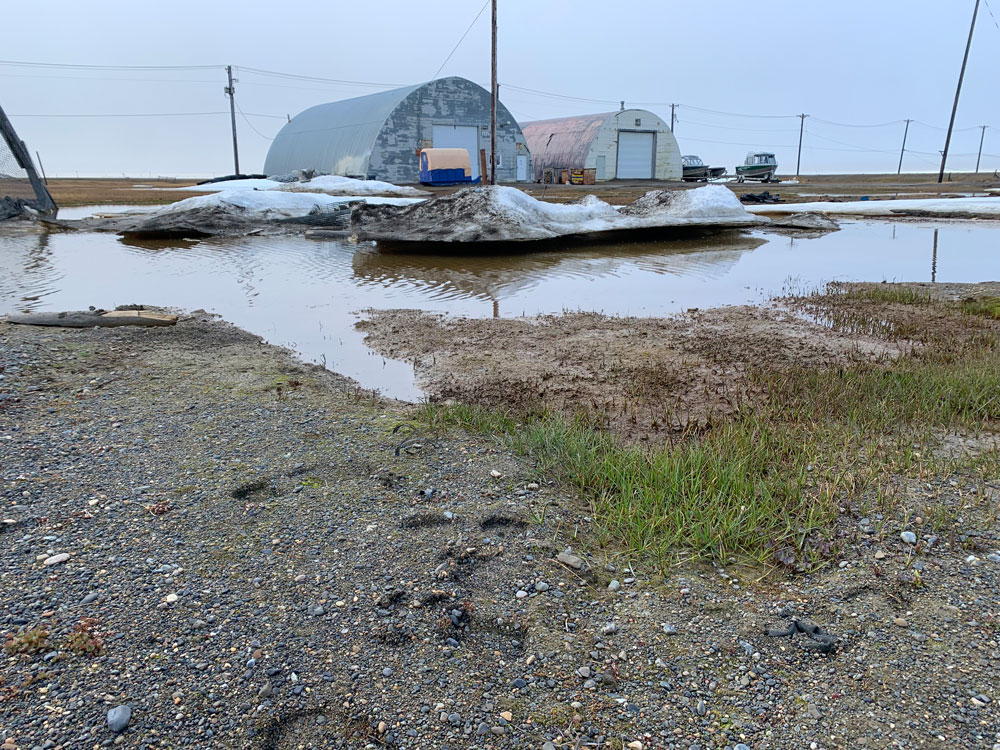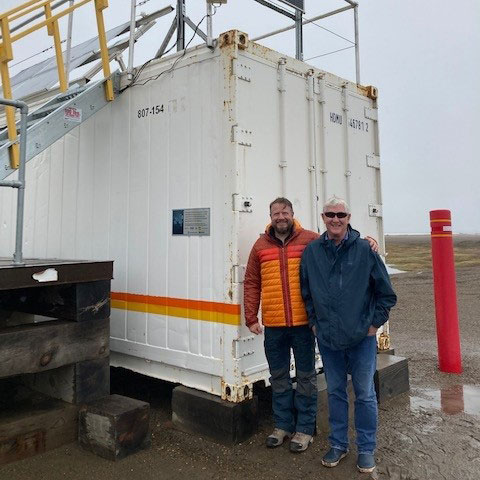
When I joined Sandia in April 2022 as the associate labs director for Infrastructure and Security Operations, I made it a goal to visit all the Labs’ sites to better understand the activities happening at each facility and their specific operational challenges.
My most recent trip took place in July, when I traveled to “the top of the world” to see two Alaska sites managed by Sandians in the Integrated Security Solutions division. My travel companions included leaders from the Facilities Area Management organization responsible for obtaining and maintaining Sandia’s remote facilities.
Oliktok Arctic Research Center

First up on our tour was the Oliktok Arctic Research Center at Oliktok Point, a cape that juts out into the Arctic Ocean. Sandia manages the site’s special use airspace for the Department of Energy’s Arctic Energy Office and other sponsors. I learned that this capability provides opportunities for terrestrial, marine and atmospheric research, including airborne studies and testing with platforms like tethered balloons and unmanned aerial vehicles.
Interested in reducing the site’s environmental footprint, the team at Oliktok is actively working to achieve net-zero emissions at the site. We observed a wind turbine and bifacial photovoltaic system already installed by the team, in partnership with the photovoltaics and materials technology department, to provide clean, renewable energy. Going a step further, they are talking with the U.S. Air Force about the potential for shore power to further reduce dependence on fossil fuels.
North Slope of Alaska user facility
From Oliktok, we traveled west to the North Slope of Alaska user facility in Utqiaġvik, Alaska. Utqiaġvik is the northernmost point in the U.S. and notoriously hard to reach. Sandia has managed this Department of Energy Atmospheric Radiation Measurement user facility for more than 25 years. This site provides a broad network of scientific users with access to instruments and data — some of which were designed specifically for high latitudes — to gather data on cloud and radiative processes.
Our group witnessed the launch of a weather balloon and learned how switching the lift gas used in the balloons from helium to hydrogen produced on-site has reduced transportation costs and associated greenhouse gas emissions of transporting helium to the North Slope. Being at the site in person allowed me to better appreciate the thinking and measures that go into ensuring a safe launch. As explained by Andy Glen, manager of Sandia’s atmospheric sciences research group and one of our tour guides, conducting research in the Arctic is very complex and is often 90% logistics and 10% science.
I also learned from Andy and the team that Alaska’s North Slope is a prime location for studying climate change. These facilities give Sandia and the broader scientific community an advantage in being able to understand and address both science and security issues in the Arctic.

(Photo by Matt Cattaneo)
Sandia teamwork in the Arctic
While awed by the beautiful landscape, I was even more impressed by the teams that keep these Arctic facilities running effectively and efficiently. Their responsive, flexible approach to operating these sites ensures Sandia can meet mission commitments, even in the harshest of environments.
I want to take this opportunity to recognize and thank our Sandia team — Ben Bishop, Fred Helsel, Todd Houchens, Justin LaPierre and Valerie Sparks — and North Slope of Alaska site operators Jimmy Ivanoff, Josh Ivanoff and Craig Moore. Thank you also to my travel companions: Rafael Gonzalez, Todd Tillman, Matt Cattaneo, Andy Glen and Alicia Brown.
This visit provided me with great insight into how the Infrastructure and Security Operations and Integrated Security Solutions divisions can continue working together to strengthen Sandia’s Arctic presence, now and in the future.
Not planning any travel to the top of the world? I encourage you to take a virtual tour of the North Slope of Alaska user facility to get a sense of the instruments used and the research made possible by our hardworking teams.